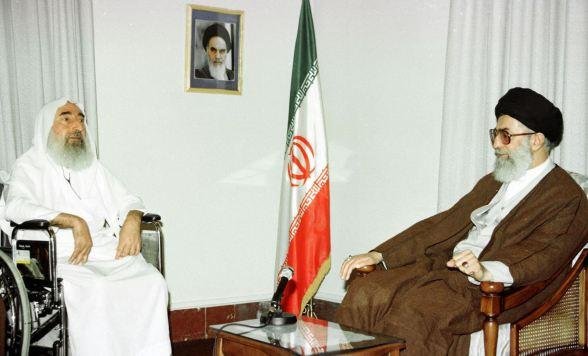Many across the world have been shocked by the speed and effectiveness of Israel’s targeted assassinations of Hezbollah’s leadership, but this practice of extrajudicial killings is nothing new for the Israel government, whose history of so-called “targeted killings” stretches back almost 50 years. Although the purpose of these targeted killings are clear, the outcomes are blurry.
What Is a Targeted Killing?
Targeted killings are hard to talk about, as there is no official definition in international law of what a targeted killing is meant to be. Generally, though, according to the International Committee of the Red Cross, targeted killings are used to refer to any killing ordered by a state outside the judicial process.
These actions are very controversial internationally as the targets of these assassinations are often geographically removed from any hostilities they may be involved in and sometimes aren’t even participating in the hostilities being committed. These actions also gain controversy from the fact that they allow the state to kill those that are opposing it without the official judiciary approval.
Israel’s Use of Targeted Killings

By Khamenei.ir (CC BY 4.0)
When Israel began its targeted killings is debated, but the earliest of these actions can be traced back to 1973 when the Israeli intelligence organization, Mossad, launched Operation Wrath of God. This operation was ordered in response to the killing of 11 Israeli athletes in the 1972 Munich Massacre by the Palestinian terrorist organization Black September. Israel’s targeted operation saw the killings of those suspected of working for the organization across the world and would define Israel’s strategy of targeted assassinations.
15 years later in 1988, Israeli commandos killed prominent leader in the Palestine Liberation Organization (PLO), Khalil al Wazir, and in 1995, Fathi Shaqaqi, founder of the organization Palestinian Islamic Jihad, was assassinated in Malta, and Mediterranean island, an act widely attributed to Israel. In 1996, Israel assassinated Hamas bombmaker Yahya Ayyash, and the next year attempted to assassinate senior Hamas leader Khaled Mashaal.
Targeted killing would gain more use during the early 2000s when the Second Intifada, an uprising from Palestinians against Israel, occurred in the Palestinian territories. The Second Intifada saw a mass uprising inside of the West Bank and Gaza, with both non-violent demonstrations and violent attacks on Israeli civilians and military. It was also during this conflict that targeted killings would greatly increase in number as the Israeli government ordered the killing of many of those associated with the uprisings. During the Second Intifada Hamas second in command Salah Shehadeh was killed in 2002, and two years later, the spiritual leader and founder of Hamas, Ahmed Yassin, was killed in a helicopter strike. His successor, Abdel Aziz Rantisi, would be killed less than one month later.
Targeted killings continued throughout the late 2000s to today. In 2008, Hezbollah military chief Imad Mughniyeh was killed by a car bomb in Damascus. Mughniyeh was accused of orchestrating suicide bombings in Lebanon during the countries civil war and of planning the 1985 hijacking of a TWA airliner, in which a US navy diver was killed. Seven years later, his son, Jihad, would be killed in an airstrike. Following this, in 2010, Hamas operative Mahmoud al-Mabhouh was assassinated in his Dubai hotel, an action attributed to the Israeli intelligence organization Mossad.
Many targeted killings also brought more conflict to the area. In 2012, the head of Hamas’s armed wing, Ahmad Jabari, was killed in an airstrike, with his death leading to an eight day war between Hamas and Israel.
By the end of the 2010s and into the 2020s, targeted killings continued to grow and make headlines. In 2017, senior leader of Islamic Jihad, Bahaa Abu el-Atta, and his wife were both killed in an airstrike, and in December of 2023, Seyed Razi Mousavi, a longtime advisor of the Iranian Revolutionary Guard in Syria, was killed in a drone strike attributed to Israel. Only one month later, top Hamas official Saleh Arouri was killed in a drone strike in Beirut. These attacks led into the escalation in the current conflict.
In April of this year, two Iranian generals were killed in an Israeli strike on the Iranian consulate in Syria, with this attack leading to Iran launching a massive missile and drone attack on Israel. In July, Israel launched a massive airstrike in an attempt to kill Hamas’s military commander Mohammed Deif, which saw 90 civilians killed, with Deif’s fate being unknown. The same month also saw the death of Hamas’s leader Ismail Haniyeh in an airstrike claiming to have been ordered by Israel.

By khamenei.ir (CC BY-SA 4.0)
Targeted killings made big news again in September 2024 when Israel launched a coordinated campaign to assassinate the leadership of Hezbollah, killing their leader Hassan Nasrallah and many other senior officials on September 27, 2024. Earlier in the month, Israel’s spy agency planted explosives in 5,000 pagers to attack Hezbollah members in Lebanon. The attack killed nine, and brought an international spotlight to targeted killings.
Outcomes of Targeted Killings
The purpose of targeted killings is to disrupt an organization from the inside by taking out leaders and commanders. However, looking at Israel’s targeted killings against Hamas, the Wall Street Journal (WSJ) reports that any disruption was short lived and the Hamas were able to regroup much faster than expected. Not only that, but Azzam Tamimi, who is a political activist and wrote a book on Hamas, shared with the WSJ that targeted killings might actually be driving people to these terrorist groups. There is also fear that targeted killings may not help slow down or end a conflict, but expand it throughout the Middle East.
Although targeted killings are long rooted in Israel history and show results in taking out their intended targets, the unintended outcomes must also be considered.









